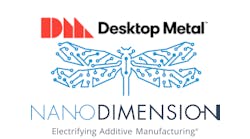How you can take advantage of additive manufacturing in the post-pandemic era
The COVID pandemic has prompted us to do more with less. Business meetings via Zoom. Interviews over the phone. And, increasingly, circumventing troubled supply chains by manufacturing items in-house. “It’s crucial that manufacturers and engineers create supply chains that promote collaboration, reduce cost of tooling and prototyping and enable quicker turn-around time,” surmises Greg Elfering, newly named president of 3D-printing OEM Ultimaker Americas.
We wanted to learn more, so we chatted with Greg about additive manufacturing trends, supply chain disruption and the distributed-manufacturing model. Take a look…
Smart Industry: How is the pandemic affecting 3D printing?
Greg: Due to the limited supply of personal protective equipment (PPE), the 3D-printing community rushed to the aid of hospitals across the country to help supply them with essential PPE. It feels good knowing that the company you are working for is making a difference in preventing the spread of COVID-19.
With 3D printing PPE and supply chain disruptions all over the news, businesses are realizing the versatility of additive manufacturing and choosing this technology as a way to ensure just-in-time part supplies to avoid costly delays.
Smart Industry: How will the increased adoption of 3D printing alter supply chains? Who will benefit from this? Who will have to pivot?
Greg: Having additive manufacturing at a company’s fingertips makes quick turnaround times possible. This can provide a competitive advantage to companies by decreasing product-development timelines, production downtime, and inventory levels at a fraction of the part cost. Companies that do not adopt 3D printing may struggle bringing products to market at the same pace as peers, while others may find it hard to stay competitive on price due to their higher production costs and delays due to sourcing issues.
Smart Industry: Do business leaders properly consider how drastically they can / must alter their manufacturing model with newfound abilities with 3D printing?
Greg: Most companies I talk to are looking for a 3D printer to solve a single problem. However, once a printer is available, it is amazing how many applications the engineering or design manager finds to utilize the printer and alleviate a multitude of problems in their supply chain. Over and over again I hear how outsourcing and inventory levels significantly drop, part cost decreases, and parts are finally available in a timely manner.
Smart Industry: What most excites you about the near future of 3D printing?
Greg: The 3D-printing process will evolve and improve just as computers and peripherals have. To some degree, 3D-printing technology follows Moore’s Law, with regular speed and cost improvements. Faster computers, new materials, process-control technology, and impressive ingenuity are coming together to make machines less expensive and more capable than ever before. I get excited thinking about the future as I see the public and private investment in additive manufacturing. 3D printing is becoming accessible to all and has a place in many future toolboxes.



